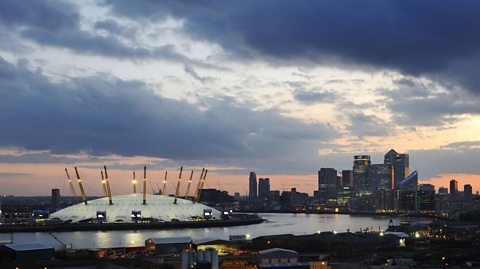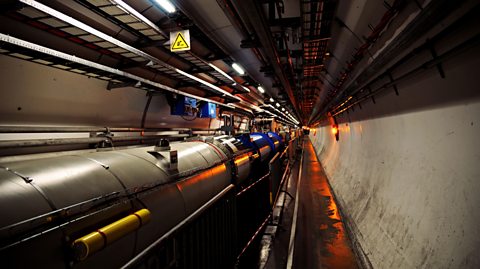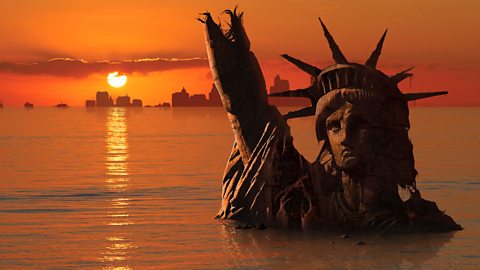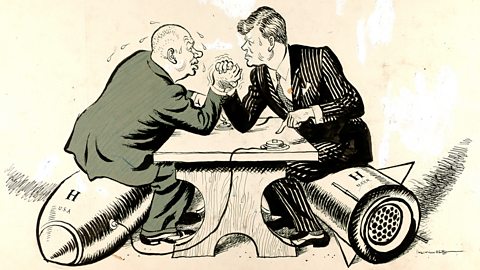According to conspiracy theorists, the world should have ended a million times over by now.
But itÔÇÖs not always misplaced worry - there have been times throughout history when genuine international disasters have been averted, too.
Here are five examples throughout history of the world not ending, whether the threats were real or not.
The Millennium Bug (Y2K bug)

Everyone was partying like it was 1999, but the dancing stopped when IT analysts and software engineers noticed a teeny tiny problem with the way microchips were coded. We say teeny tiny: it was something that had the potential to shut down every computer in the country and possibly the world.
Essentially, everything that was computerised was set with a date made of two numbers to save memory. So, 1999 would be ÔÇÿ99ÔÇÖ. This meant though, that when the clock struck midnight on 1st January 2000, computers might think it was actually 1900, as both years were represented as ÔÇÿ00ÔÇÖ.
This led to widespread panic - would supermarket tills stop working? Would banks go into meltdown? Would planes start falling out of the sky? People thought these things were real possibilities, so campaigns such as the UK governmentÔÇÖs Action 2000 were launched to help people prepare for the aftermath of the millennium countdown.
3 2 1
And nothing happened. Many people thought that the government and others had made a mountain out of a molehill. The reality was however, that billions was spent in the UK and worldwide to prevent the problem and engineers spent months making sure everything was ÔÇÖ2000 compliantÔÇÖ.
Large Hadron Collider (LHC)

ItÔÇÖs the most powerful particle collider ever created. Rather than this being a completely amazing feat of science and engineering however, some people found this terrifying, as they thought it might rip holes in the fabric of the universe.
The fear was that crashing two particles together at almost the speed of light would create mini black holes, which would suck up all the EarthÔÇÖs matter. Some people even thought that the LHC would create so-called ÔÇÿkiller strangeletsÔÇÖ, which mess with the laws of physics and make the fabric of the universe go topsy-turvy.
A group in the US even filed a lawsuit, demanding the European Organisation for Nuclear Research (or CERN) halt experimentation until it could categorically prove the LHC was safe. Everything turned out fine in the end though, as it was switched on in September 2008 and the universe didnÔÇÖt implode. ThereÔÇÖs still time though; an even BIGGER collider is currently being built and its work-in-progress name is the Future Circular Collider.
The Cuban Missile Crisis

At the height of the Cold War, there was a week when the world really did seem on the precipice of a nuclear catastrophe.
This was ÔÇÿThe Week the World Stood StillÔÇÖ, or the Cuban Missile Crisis, when the US had a nuclear stand-off with the Soviet Union and Cuba. The Soviet Union had built a missiles base in Cuba, which was in firing range of Florida. The US already had one in Turkey, which was in firing range of Russia.
This led to a lot of grand-standing between the nations and, for a short period, it really looked as though the countries were going to wage nuclear war. Thankfully, an agreement was struck to decommission the bases and international disaster was avoided.
2012

This Armageddon conspiracy theory was so widespread that 1 in 10 people were anxious about it genuinely happening. Clearly, given youÔÇÖre reading this, it didnÔÇÖt.
Archaeologists had discovered an Ancient Mayan calendar which only went up to December 21, 2012. This struck fear into the hearts of the general public, who then came up with many wild theories as to how this end would manifest: the sun would overheat and burn the planet to a crisp, a comet would collide with Earth, or even another planet would knock us out of the sky.
Nothing happened. For starters, the Mayan calendar didnÔÇÖt actually end in 2012, it just reset - the world doesnÔÇÖt end on January 1st every year, either! But scientists have also pointed out that the theories that were used to ÔÇÿproveÔÇÖ that the world was coming to an end, were complete hogwash too: the solar activity of the Sun at the time was nowhere near dramatic enough to have consumed the planet. Most importantly though, we think, is that if a planet or comet was indeed hurtling towards Earth, there would be one tell-tale sign that it was on its way: we would have been able to see it.
Search for extraterrestrial intelligence (SETI)

The Search for Extraterrestrial Intelligence, or SETI, is basically a fancy way of saying looking for aliens.
The scientists at the SETI research institute do just that. They do it by listening out and looking for signals created by alien tech, which they hope may then lead to the location of out-of-this-world life forms. What people were (and are) afraid of, is that part of the research includes sending signals from Earth, in the hope that other planets may pick up on it and send a reply. Think of it a bit like an intergalactic Facebook friend request.
Some people are scared of this because they think these signals sent into the great beyond do not differentiate between those aliens who want to help us, and those that want to harm us. Weve not had any aggressive alien attacks since they started their research though yet.
This article was published in February 2019
The Cuban Missile Crisis
For more information of this tense time during the Cold Ware, read this.

Will a human ever be born on Mars?
Forget aliens in outer space, humans could potentially inhabit other planets in the future.

Maya Civilisation. collection
Want to learn all about the civilisation that created the 2012 calendar? You've come to the right place.
